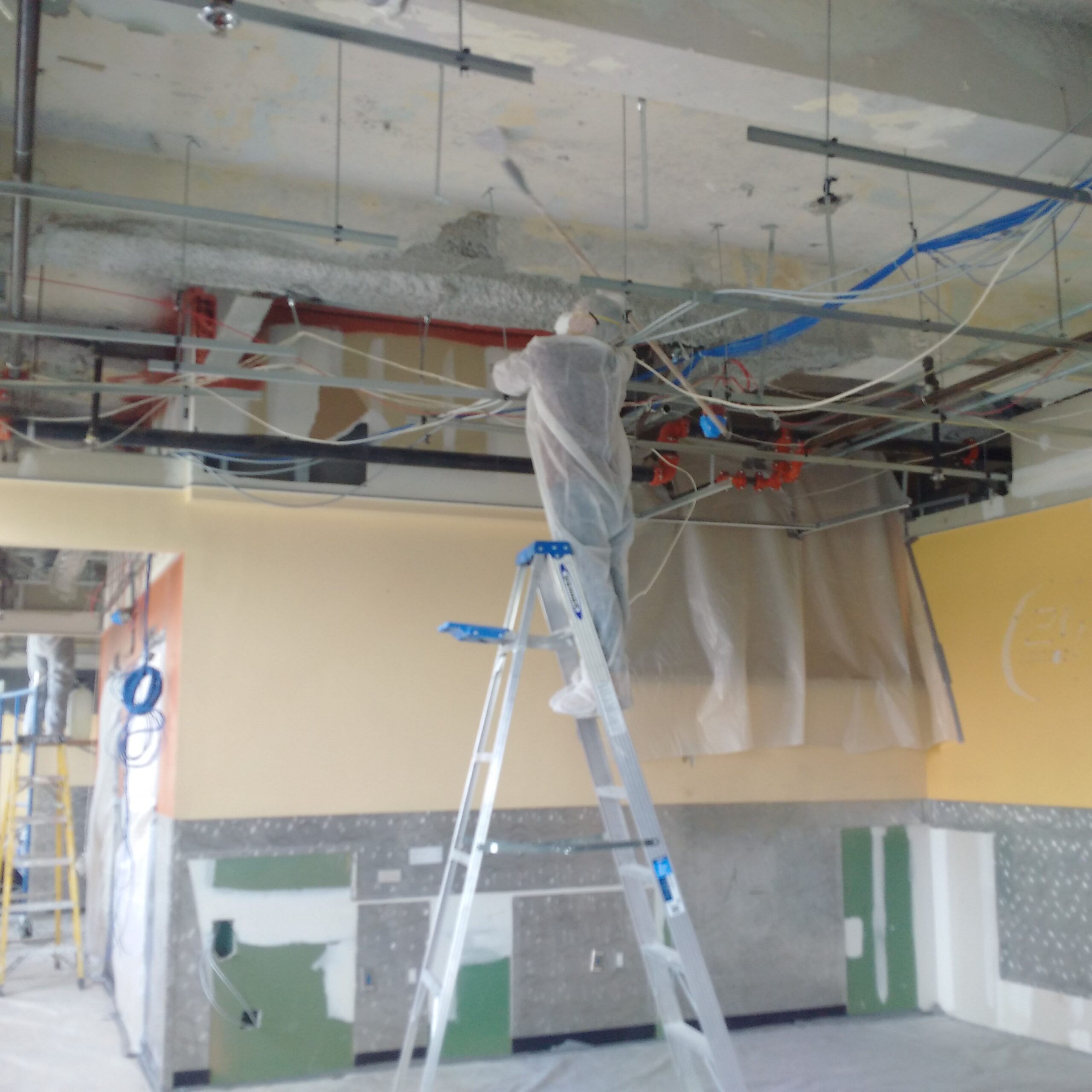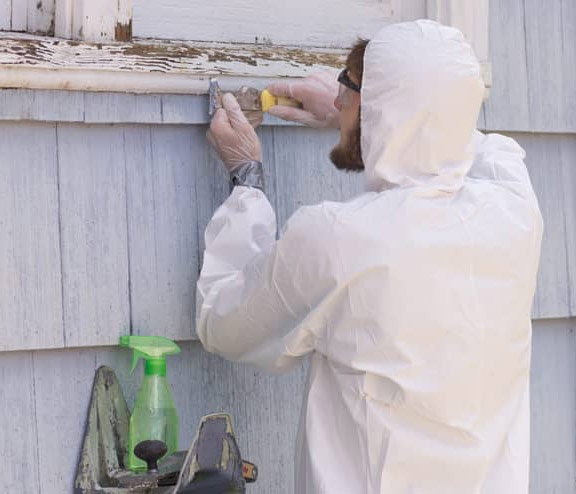Relied On Lead Paint Removal Company-- NYC's Premier Lead Reduction Service
Necessary Devices and Methods for Effective Lead Infraction Cleanup
Addressing lead infractions effectively requires a comprehensive technique that mixes the right tools with calculated methodologies. Concurrently, the usage of specialized cleanup tools, such as HEPA vacuum cleaners and lead-specific cleansing agents, is critical for extensive contaminant elimination. Effective control approaches, including plastic sheeting and unfavorable air stress systems, are essential to stop the spread of unsafe materials.
Personal Protective Devices
Individual safety equipment (PPE) is an important part in the effective management of lead contamination clean-up. PPE works as an essential barrier, protecting workers from the harmful results of lead direct exposure, which can cause extreme health repercussions. The vital PPE for lead cleaning consists of respirators, safety clothing, handwear covers, and eye defense. Each type of equipment is specifically developed to alleviate different dangers connected with lead bits and dust.
Respirators, especially those furnished with HEPA filters, are vital for filtering airborne lead bits, protecting against breathing. Safety clothes, consisting of coveralls and non reusable suits, stops lead dust from sticking to workers' garments, lowering the risk of second contamination.
Additionally, rigorous training on the right usage and upkeep of PPE is important. Employees need to be educated on donning and doffing procedures to stay clear of contamination. Routine examinations and replacements of PPE parts are necessary to preserve their safety abilities, making certain a safe and certified cleaning operation.
Specialized Cleaning Tools

Another necessary tool is the wet/dry vacuum, which can properly clean up both dust and fluid impurities. These vacuums commonly come with HEPA filters to supply an added layer of safety. Damp cleans or tack cloths are additionally essential for surface area cleaning; they are specifically made to capture and hold lead bits, minimizing the threat of spreading contamination.
For more stubborn down payments, specialized lead-removal cleansing representatives are required. These representatives are formulated to break down lead bits, making them much easier to get rid of. Scrub brushes with sturdy bristles can aid in this process, particularly on harsh surface areas where lead dirt often tends to stick extra highly.
Additionally, encapsulants are used to seal lead-contaminated surface areas, protecting against the release of lead dirt. These specialized paints and finishings are designed to stick to different substratums, supplying a lasting remedy for lead control.
Efficient Containment Techniques
Efficient containment methods are essential in reducing the spread of lead contamination during cleanup tasks. Applying durable containment techniques guarantees that lead particles do not move to untouched areas, thereby securing both workers and the environment. One primary approach is using plastic sheet to seal off infected areas. Durable polyethylene barriers can be mounted from flooring to ceiling to create a regulated job area, considerably decreasing the risk of air-borne lead dust dispersal.

To boost control, encapsulants can be put on website here surfaces that are not being eliminated or disturbed. These specialized coatings bind lead dirt, reducing its schedule for resuspension. Additionally, all employees need to wear go to this web-site ideal Personal Safety Equipment (PPE), consisting of respirators and disposable matches, to stop contamination spread.
Safe Disposal Practices
Guaranteeing secure disposal methods is a crucial part in the management of lead contamination cleaning. Proper disposal minimizes the danger of lead coming back the environment and threatening public health. The primary step is to recognize and segregate lead-contaminated waste from various other materials. Secure containment utilizing heavy-duty, watertight containers is vital to protect against spillage during transport.
Carrying lead waste needs adherence to rigorous standards. Making use of licensed contaminated materials carriers guarantees that the products are handled properly. Paperwork, including materializes outlining the kind and amount of waste, must go along with deliveries to track the waste from the website of origin to its final disposal location.
Designated harmful waste disposal facilities are equipped to deal with lead-contaminated materials safely. These centers commonly utilize sophisticated techniques such as stablizing, solidification, or chemical therapy to counteract the lead before disposal. Landfilling in specialized, lined areas that protect against leachate from infecting groundwater is a common practice for last disposal.
Normal training for employees entailed in lead waste disposal is crucial to maintain safety and security standards and stop unintentional exposure. By adhering to these methods, companies can substantially decrease the environmental and wellness effects associated with lead contamination.
Regulatory Conformity Tips

Sticking to regulatory compliance is paramount in the effective execution of lead contamination cleanup. Understanding and complying with federal, state, and local policies guarantees not just the safety and health and wellness of people but likewise the legal and monetary health of the cleaning company. The Environmental Defense Firm (EPA) establishes strict requirements, such as the Lead Renovation, Fixing, and Paint (RRP) Policy, which mandates correct accreditation and training for contractors dealing you could look here with lead-based activities.
Conformity begins with a thorough analysis of applicable laws and guidelines. Organizations has to remain upgraded on any kind of legal changes, which can be assisted in through routine training sessions and registering for industry updates. Paperwork is another crucial conformity facet; keeping comprehensive documents of all tasks, including assessment reports, worker training logs, and disposal shows up, is necessary.
Moreover, engaging with certified lead examiners or risk assessors guarantees that lead risks are properly recognized and alleviated. Employers must enforce using Individual Safety Tools (PPE) and make certain that safety and security protocols are strictly complied with. Transparent interaction with stakeholders, including staff members, customers, and governing bodies, will certainly promote a society of compliance and accountability, eventually contributing to a more secure and a lot more efficient lead cleaning process.
Conclusion
Efficient lead violation clean-up necessitates the assimilation of specialized tools and tactical methods to make certain security and efficacy. Using HEPA vacuums, specialized cleansing agents, and reliable containment methods such as plastic sheet and adverse atmospheric pressure systems is critical. Individual protective equipment (PPE) safeguards employees from exposure, while risk-free disposal methods and rigorous adherence to regulatory compliance are essential for responsibly handling contaminated materials. Collectively, these steps significantly minimize health risks and add to a cleaner environment.